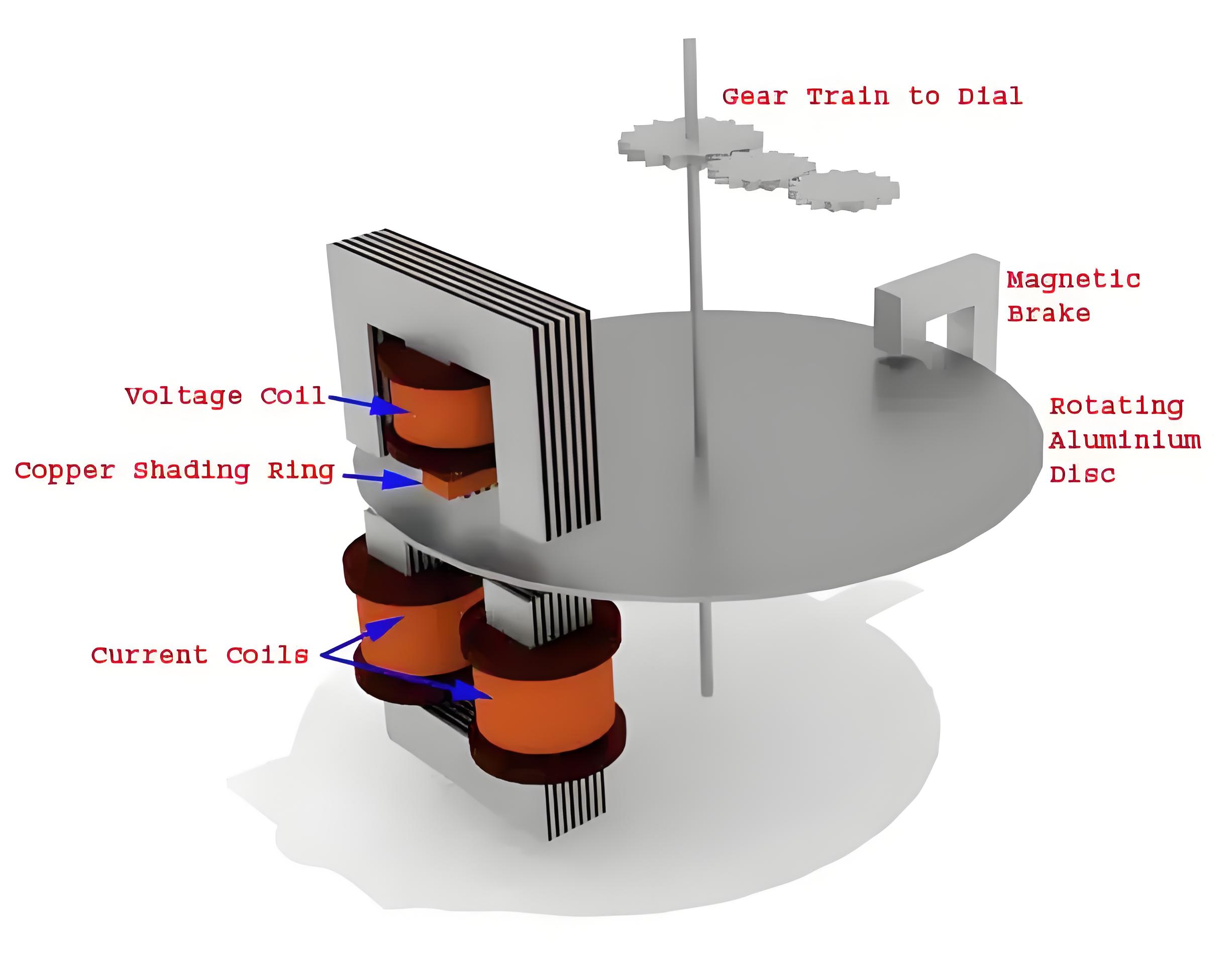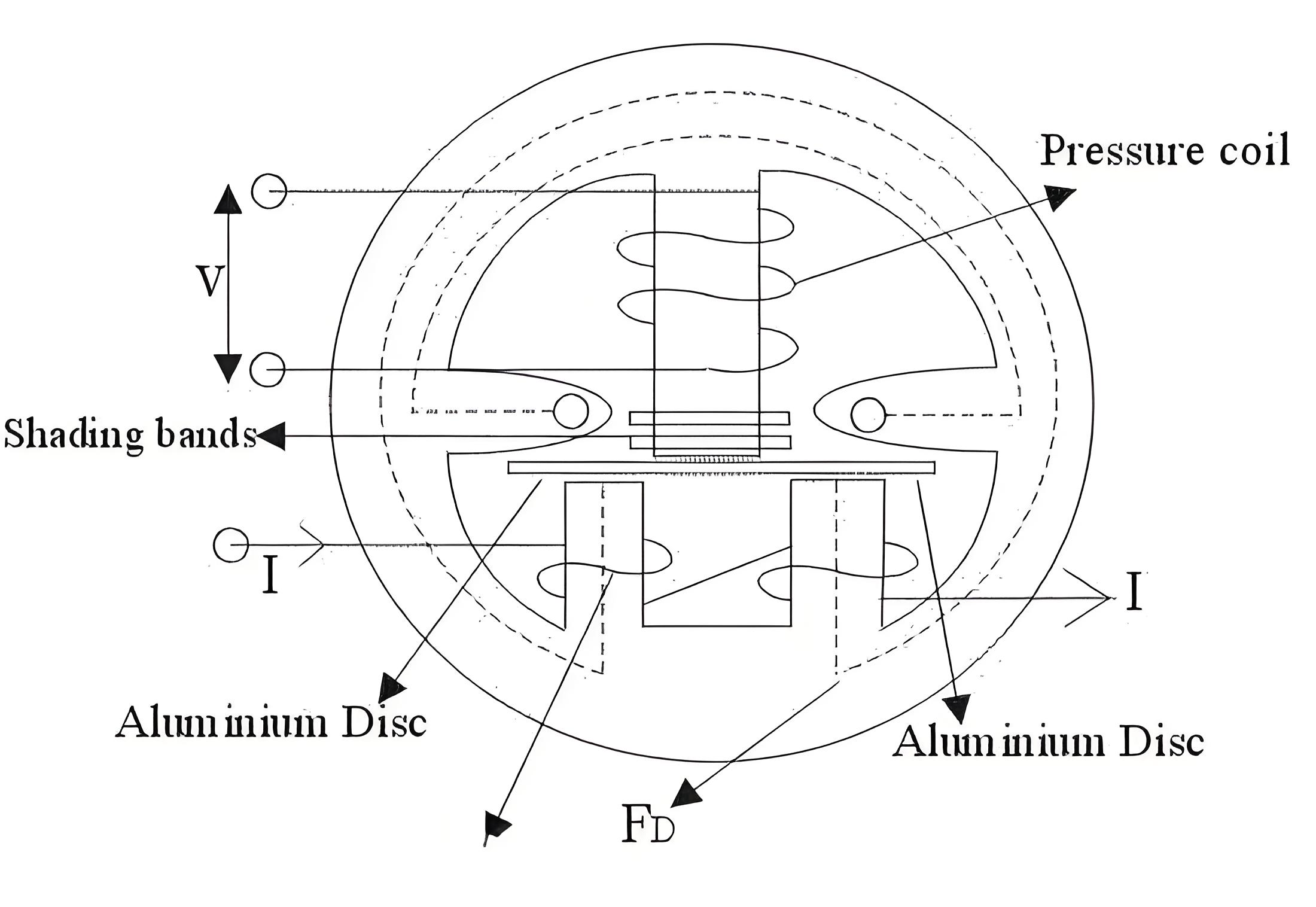Construction of AC Energy Meter
Energy Meter Definition
An energy meter, also known as a watt-hour meter, is a device that measures electrical power consumption.
Main Components
Driving System
The components of this system are two silicon steel laminated electromagnets. The upper electromagnet is called shunt magnet and it carries a voltage coil consisting of many turns of thin wire. The lower electromagnet is called series magnet and it carries the two current coils consisting of a few turns of thick wire. Current coils are connected in series with the circuit and load current passes through it.
The voltage coil connects to the supply mains, producing a high inductance to resistance ratio. Copper bands in the lower part of the shunt magnet provide frictional compensation, ensuring a 90-degree phase angle between the shunt magnet flux and the supply voltage.

Moving System
As you can see in the figure, there is a thin aluminum disk placed in the gap between the two electromagnets and mounted on a vertical shaft. The eddy currents are induced in the aluminum disk when it cuts the flux produced by both the magnets. As a result of interference of eddy currents and two magnetic fields constitute a deflecting torque in the disk. As you start consuming power the disk slowly starts rotating and the several rotation of the disk displays the power consumption, in the particular interval of time. Normally it is measured in kilowatt-hours.
Braking System
The main part of this system is a permanent magnet called brake magnet. It is located near the disk so that eddy currents are induced in it due to movement of rotating disk through the magnetic field. This eddy current reacts with the flux and exerts a braking torque which opposes the motion of the disk. The speed of the disk can be controlled by changing flux.
Registering System
As its name suggest, it registers the number of rotation of the disk which is proportional to the energy consumed directly in kilowatt-hour. There is a disk spindle which is driven by a gear on the disk shaft and indicates the number of times the disk has turned.
Working Principle of Energy Meter
The working of single phase induction type energy meters are based on two main fundamentals:
Rotation of an Aluminum Disk
The rotation of metallic disk is operated by two coils. Both the coils are arranged in such way that one coil produces a magnetic field in proportion to voltage and the other coil creates a magnetic field proportion to current. The field produced by voltage coil is delayed by 90o so that eddy current is induced in the disk. The force exerted on the disk by the two fields is proportional to the product of the immediate current and voltage in the coils.
This interaction causes a lightweight aluminum disk to rotate in an air gap. When there is no power supply, the disk needs to stop. A permanent magnet acts as a brake, opposing the disk’s rotation and balancing its speed with power consumption.

Arrangement of Counting and Displaying the Energy Consumed
In this system, the rotation of the floating disk has been counted and then displayed on the meter window. The aluminum disk is connected to a spindle which has a gear. This gear drives the register and the revolution of the disk has been counted and displayed on the register which has series of dials and each dial represent a single digit.
There is a small display window in the front of the meter which displays the reading of energy consumed with the help of dials. There is a copper shading ring at the central limb of the shunt magnet. To make the phase angle between flux produced by shunt magnet and supply voltage about 900, small adjustments in the place of the ring is required.

The Electricity Encyclopedia is dedicated to accelerating the dissemination and application of electricity knowledge and adding impetus to the development and innovation of the electricity industry.













